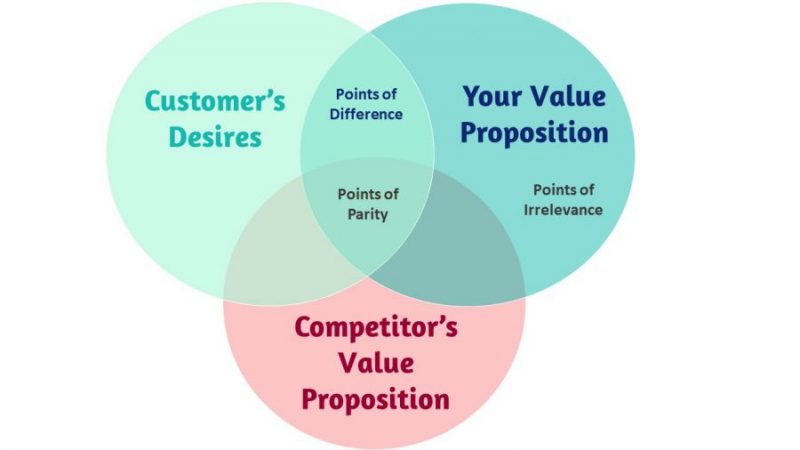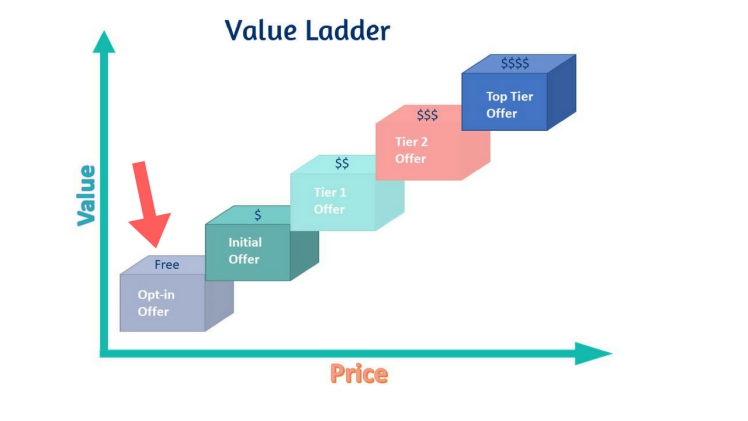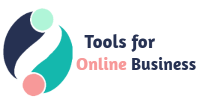Discover how to identify your product, research your niche, analyse competitors and position your product as a profitable solution for eager buyers.
By identifying your 'playing field' at our first stop you will have identified your ideal customer and the niche you want to operate within.
At this stop on your online business journey, we will focus on researching, positioning, and selecting a product solution. A solution that will meet the needs of your ideal customer. You will scan the competitors within your market and analyse your competitor's product offerings. As well as learn from the leaders within your target market.
To be able to identify a profitable solution you need to deepen your understanding of your customer's needs, wants and desires.
At this stop we will:
Free or Paid Digital Information Product Offering?
Information products are often created to generate sales. Others are created to attract potential customers into your sales funnel. They aim to help your online business to grow and thrive. Where you position your product on the value ladder will help inform the format and shape of your product offering.
Creating a product to offer as an attractive free opt-in (also known as an opt-in incentive, freebie or lead magnet) is important. They help your customers to get to know, like and trust you. Free opt-ins incentives / freebies play an essential part in building an online information business. They give you the opportunity to showcase your knowledge and skills. As well as build lasting, profitable customer relationships.
Define Your Goal for Your Product Offering
Before you start your research and analysis you need to decide the goal for your product offering. Are you developing a free product offering to support an existing product? Are you developing the product offering as an item for sale? Both will require research but the depth of research will differ.
The goal of an opt-in incentive / freebie differs from a paid information product. The opt-in incentive supports the growth of your business by attracting potential customers. The opt-in is intended to be a 'taster' of your paid products. They are generally smaller in size when compared to your full product.
Whether you are creating an information product for sale or to offer as a free opt-in incentive you are still creating a quality product. It is 'customer-centric', appropriately researched and showcases your online business. Both paid and free products offer the opportunity to build authority and trust in the eyes of your customers.


Stage 2 - Identify Your Digital Product Offering
Research Your Niche Market
You have already narrowed your niche and created a Buyer Persona for your ideal customer. While you work through the research activities keep you Buyer Persona front and centre. As you deepen your understanding of your ideal customer add your insights to your Buyer Persona document.
It is time to dig deeper into the mind of your potential customers. Your aim is to create a product that your customers want. Offering a product that is 'customer-centric' has a higher probability of sales success than a product that is 'me-centric'.
Market Research - Why Bother?
Market research is the process of gathering information. The aim is to increase your awareness of how the people you hope to sell to will react to your products or services. Every successful business has extensive knowledge of their customers and their competitors. Online entrepreneurs are no different.
Regardless of the size of your budget, the time you have available or your level of experience, some form of market research is possible. Market research provides valuable information and insight to help you improve your business decisions.
Failure to conduct market research before you develop your information product is like driving a car from San Francisco to Denver without a roadmap. You may know where you want to go but you don't know which direction to travel in to get there. Any passengers you pick up on the way may not be 'ideal'. Nor will they all want to travel to the same destination. Competition within the online information space is often fierce. Without conducting research you will have handed your competitors an advantage over you.
Market research is key to identifying where your customer 'fishing holes' are. If you can't find where your ideal customers hang out how can you promote to them when you have your product ready? Market research also helps you to validate your product offering before you develop it. To validate your product solution you need to engage with your potential customers. Before you develop your product, not after.
Effective Research can Uncover a Treasure Trove of Business Opportunities
Take note of the pain points experienced by your audience as you conduct your research. How your audience conveys their pain points, hopes and desires will vary depending on your target niche and customers. Look deeply into the issues being experienced as well as how they express them. This is where you will find opportunities to identify a solution that your audience wants and will more likely pay for.
Consider the following questions as you work through to identify your product offering:
- What are their burning pains, desires, hopes and how do they express them?
- What solutions can you identify that would help your audience?
- What product offerings could you create to deliver an attractive solution?
- Are there shortfalls in solutions being offered by competitors within your niche?
- Are there gaps within your chosen niche that are not being met?
“I begin with an idea and then it becomes something else”
Pablo Picasso
How to Conduct Market Research?
The first and most important step when conducting market research is establishing clear goals. You need to define what you need to know and why. Otherwise, you can spend large amounts of time getting nowhere fast. You need to conduct the level of research that is 'fit for purpose'. Take into consideration available business resources and the type of solution you want to offer.
Once you have established your goals, it is important to develop a strategy and select the techniques you will use to gather data. There are two broad types of research - primary and secondary research. Ensure that you include a mix of quantitative and qualitative methods.
Primary Research
Primary research (field research) involves gathering new data that has not been collected before. The information that is gathered aims to answer a specific question or a set of questions. The process can be time-consuming. But the benefit is that you can specifically target your ideal customers. While the sample sizes are generally smaller, you get to know the niche market a lot better. You get closer to your customers by talking directly to them. This enables you to obtain deeper insights. You can then use your insights to develop a solution that will meet their needs.
Primary research is more qualitative (opinions and views). However, the results provide a rich data set that gives an in-depth picture. It is particularly useful for exploring how and why things have happened.
Examples of primary research techniques include:
- interviews
- focus groups
- observations
- surveys / questionnaires


Secondary Research
Secondary research (desk research) involves gathering existing data that has already been produced. With secondary data, you can establish benchmarks. You can often get answers to questions that may make customers uncomfortable if asked directly (such as age or income levels). It is normally less time consuming than primary research. It can be less expensive as you are using existing sources of data which may be free to access.
Secondary research is less targeted than primary research. However, it can yield valuable information about your niche as a whole. The sample size is also larger so it can provide measurable data to formulate facts. As well as uncover patterns in research. Google Analytics can provide a wealth of quantitative data. Particularly if you have had your website up and running for some time.
Examples of sources for secondary research includes data from:
- trade associations and publications
- government sources of industry data
- academic institutions
- third-party sources
- website and social media
Create a Problem Statement to Focus Your Efforts
A problem statement is the combination of four key elements into one statement to convey the issue at hand:
• root cause
• people impacted
• impacts of the issues
• effects the successful solution will include
A problem statement generally follows the format of:
“The problem of [statement of the problem] affects [customer / stakeholder], the impact of which is [statement of issues, costs, or other impacts], so a successful solution would be to [important benefits that would successfully solve the problem].”
Components of the Problem Statement
Let's take a closer look at each component of the problem statement:
Statement of the problem - What is the goal or need of the audience? What is the root cause of the problem your ideal customer is trying to solve? What do ideal customers struggle with? What concerns do they have?
Customer / stakeholder - Who specifically is impacted? There may be others that are affected directly or indirectly not just the problem-sufferer.
Statement of issues, costs, or other impacts - What are the impacts and outcomes suffered as a result of the problem? What are the costs in terms of money or lost opportunities? What are the pain points experienced? What desires are being left unfulfilled?
Important benefits that would successfully solve the problem - What characteristics and qualities does your solution include or makes your solution compelling? What does your solution do or have that resolves key issues or addresses a need? What would the customer transformation look like if they applied your solution?
Example:
The problem, manually searching through piles of physical invoices and payment receipts affects the auditor, accountant and other financial personnel within the organisation. The impact of this is missing documents, a lengthy auditing process and high accountancy and audit fees. A successful solution would provide an online system to scan invoices and receipts. This would enable documents to be viewed online and reduce professional service fees.
Once you have created your problem statement ensure that you add it to your design brief. So when designing the finer details of your solution you're clear on what problem you are trying to solve. Who you are solving it for, why you are attempting to solve it and how you propose solving it. Problem statements help to maintain focus and bring clarity to the issues experienced.


Competitor Analysis
Competitive analysis is a broad term for researching, analysing and comparing competitors. As well as your business as a whole. Analysis of your competitors and industry leaders is a business opportunity. It can help you identify a product offering that is better, different or stands out. It could also highlight an opportunity to deliver higher value at a premium price.
Competitive analysis is not something you do once and forget about. It is something that should be run routinely. This allows you to gain valuable insight that could help you grow a sustainable business. Plus it gives you the opportunity to respond quickly to competitive changes.
Benefits of Competitive Analysis
By conducting a competitor analysis you will be able to:
How to Identify Your Real Competition
Who is your real competition? You first need to make sure that you are comparing 'apples with apples'. When you went through your market research earlier you will have noted potential competitors. Competitors whose names would come up over and over again. Perhaps they are leaders in your niche or active on social media. Maybe they have an active fan base or come up high on Google searches rankings. Take the list of competitors that you have put together so far. Then divide them into direct and indirect competitors.
Direct competitors are other businesses that offer for sale an almost identical product within the same market as yours.
Example: Apple's iPhone is in direct competition with Samsung's Galaxy within the smartphone market
Indirect competitors are other businesses that offer for sale a product that is not the same but that could satisfy the same consumer need.
Example: sellers of desktop PCs and sellers of laptops are in indirect competition
Analyse Your Competitors - Stalk Your Competition
Now that you have identified your competitors it is time to evaluate their strengths and weaknesses. What are their product offerings? Look also at their service performance and marketing strategies. If your competitors have been in the marketplace for a while you have the opportunity to learn from them. We are not talking about copying them here. We are talking about learning and identifying what would work for you and your business and what wouldn't.
What are They Offering?
As you work through this process you may feel a little overwhelmed initially, but bear with it. Remember this is as a learning opportunity.
- what do you like or dislike about their marketing strategies?
- what would you do differently or better than them so that you can stand out in the market?
- how does their product offerings differ from your planned product offering?
- what is their pricing structure and how does this differ from your own thinking?
- how do their customers perceive them, are they satisfied or unsatisfied?
How are Their Solutions Delivered?
So far we have focused our research and analysis on what solutions your competitors were offering. We are now going to shift gears and dive into how your competition has delivered their solution.
Take a closer look at the design elements used. The information content, the layout of the product as well as information product outlines. This will help give you confidence and potentially stimulate ideas. You can bring these ideas into your information product design and creation process.
By analysing your competitors and other similar niches you can often gain inspiration into designs. You can then apply them to your information product and opt-in incentive creation.
Are your competitors:
- delivering their solution or opt-in freebie as a visual, audio, video or tool offering?
- providing superficial coverage of the topic or are they diving deep?
- presenting out of date or hard to understand solutions/information?
- presenting a perspective that is different from yours?
- offering a product, method or format that you can build on (not copy)?
Make sure you make notes as you go as well as save links to examples. You can then leverage the valuable insight you gather through this process when you start your product design process.


Bring Your Research and Analysis Findings Together
Consider the following as you work through the information you discovered during your competitor analysis:
Points of Parity - features you offer that are important to your audience that you also share with your competitors.
Points of Difference - features that are important to your audience and not available from your competitors.
Points of Irrelevance - features that you may have spent a lot of effort creating but nobody really wants them.
Focus your efforts on your Points of Difference. These are the features you can emphasise to help move your audience to become a paying customer. They are your differentiators and can help you stand out from your competition.
Be mindful that not all Points of Difference hold the same value. Some may appeal to a certain segment of your customers but not others. No matter how much effort you’ve put into researching and brainstorming to identify your product. You should test to validate whether your offering will resonate with your ideal customers.
Select a Product Offering - Help get Your Audience Results
Selecting your product offering is all about what will get your audience results. You may help reduce a pain point, help them meet a desire or reach a goal. It is all about focusing on getting your audience the results they want with ease.
You have identified your playing field and your ideal customer. As well as checked out what your competitors are offering. You should now have a clearer view of what results your customers hope to achieve. Plus have a good idea of what information product solution will help. Information products come in many sizes and shapes. They are also delivered using a range of mediums (visual, audio, video, tools).
Validate Your Proposed Solution
Before you focus on which format to use within the various mediums, you need to validate your solution with your audience. You need to check that your proposed solution will be viable or not. Check the solution itself and whether your audience would be prepared to pay for your product offering.
If your proposed solution does not resonate with your audience you have just saved yourself a lot of time, money and angst. Learning that it is not a viable option to take forward to development may be hard to take. But it is a lot better than finding out once you have launched your product and all you hear is crickets.
If you need to, circle back to the 'identify your playing field' stop. You might need to refine your niche further. Review your ideal customer, perhaps you are focusing on the wrong audience. Do they have the ability or willingness to pay? Think struggling student vs income earner. Consider selecting another idea from your demand matrix. Or review the market and competitor research you completed within this stop to refine your product offering.
On the other hand, if it does resonate, which we hope it does, then the feedback you get about the proposed solution is invaluable. Feedback on the medium and format of the solution. How it would work best, along with pricing indications are worth their weight in gold.
Position Your Product Offering
Information products are used for many purposes. Some are used as an opt-in incentive / freebie / lead magnet to attract potential customers. Others are used to build authority in your field or to build relationships of trust. Paid products can be offered at different tiers on the value ladder. When creating an information product you need to start with the end in mind. Are you developing your information product to sell or support your business growth? Maybe it is to support the sale of another information product?
The validation process you conducted earlier will have given you valuable insight. Particularly in relation to what the perceived value of your product offering is. Ideally, you will also have determined which formats your potential customers prefer.


The positioning of opt-in incentives / freebies is a lot clearer because they are at the beginning of your sales funnel. Although they are not offered for sale, they are still very valuable information products. They have a key role in creating a profitable, sustainable online business. We cover opt-in incentives / freebies in more depth within the product creation stage of our journey.
Well Done! You have completed the second stop on your online business journey.
You are now a step closer to formulating the shape of your information product offering.
You have successfully:
- defined the goal for your product offering
- effectively researched your niche further and uncovered your ideal business opportunity
- verified your customer's burning pains, wants and desires
- identified and selected a solution your customers will eagerly buy
- identified your competitors and completed an analysis of your competition
- targeted where you will place your product offering on your value ladder
You are now well prepared to take on the next stop on your online business journey - investigate your information product options. This where you will take the solution you have identified at this stop and decide which format your solution will take.
